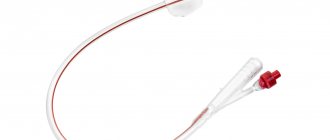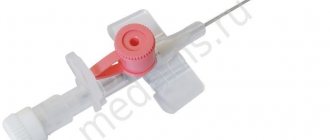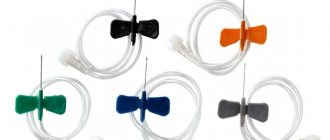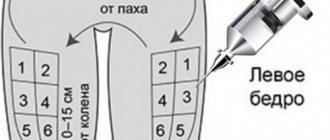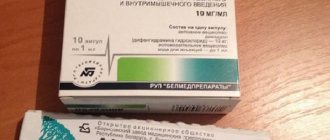In cases where a one-time procedure of intravenous drip infusion is not sufficient, and long sessions of such therapy are necessary, a special medical device is used to ensure quick and safe access to the vein - a peripheral intravenous catheter.
Despite the fact that the catheter is designed to remain in the vein for a long time, caring for it is essential to avoid serious complications. Here we will talk about self-installation of the device, as well as measures for its maintenance at home.
- Consequences of improper catheter maintenance
Description
The central catheter is a long, thin tube that is inserted into a large vein. A central catheter is used to deliver medications, nutrition, intravenous drugs, and chemotherapy into the bloodstream.
There are different types of central catheters, including:
- Peripheral central catheter - the catheter is inserted through a vein in the arm until it reaches a vein close to the heart;
- A non-tunneled central venous catheter is inserted into a large vein in the neck or leg; the end of the tube is outside the skin.
- A tunneled catheter is a catheter that is secured in place when scar tissue forms. It can be used for several weeks or months. The catheter is inserted into a large vein in the neck, which returns blood to the heart. It is then advanced along the chest wall and removed through the skin at a distance of about 12 cm from the injection site into the vein.
- Port catheter - a device inserted into a vein in the shoulder or neck. A port (titanium chamber) is placed under the skin and a catheter is inserted into a central vein. To administer medications, the port membrane is pierced with a special needle, and for the next 3-5-7 days, any solutions in any quantities can be injected through this needle.
Connection of a venous catheter with a dropper. Setting up injections
The main thing is to follow the rules of asepsis. Whichever of these manipulations you perform, be sure to treat your hands and all external surfaces of the venous catheter with which you will interact with an antiseptic before and after the injection or connecting the IV.
The administration of injections was mainly clarified by considering the issues of catheter design. It remains to be recalled that for this purpose a special additional injection port is used, which is located at the top of the main unit of the device - where the wings are located. You can also find it by the colored plug above the valve.
To give an injection, you need to draw the medicinal solution into the syringe in the usual way, and then, after first removing the injection needle and the cap from the device port, press the plunger, creating pressure inside the catheter chamber. In the same way, you can wash the device as part of standard care.
If there is no injection port, then the drug for bolus infusion can be injected into the only available port of the catheter - the infusion port, through which the IV is connected. If it is necessary to add a drug during an infusion session, you should draw the required medicine into the syringe and, without removing the needle, inject the solution into the injection unit of the system itself.
Before each connection of a venous catheter with a dropper, the infusion port of the former is washed, especially if several hours have passed since the previous procedure.

We attach the pre-assembled and filled dropper to the port immediately after flushing. The port cover should be treated with an antiseptic and stored under sterile conditions for the entire duration of the procedure.

After the end of the next session, the infusion system is disconnected in the same way as it was connected, and the port is washed again and closed with a cap.
How to independently assemble and fill a dropper and how to use it correctly is described in detail here.
Reasons for performing the procedure
A central catheter is inserted when the patient needs:
- Administer medications or fluids long-term;
- During chemotherapy;
- For nutrition, if food intake through the digestive system is impossible;
- Periodic blood sampling;
- Blood transfusion;
- For intravenous administration of drugs when the veins in the arm are difficult to access;
- For dialysis.
The central catheter is usually inserted by an interventional radiologist or vascular surgeon. Once inserted, the catheter can be used for several weeks to months.
How much does it cost to put in an IV with your medicine?
The higher cost applies to liquids with various vitamins or electrolytes and other medications. Keep in mind that fluids and other suggested treatments can easily be obtained through other means (taking generic vitamins and other over-the-counter medications) for only a few hundred rubles. Remember that the dropper allows you to quickly saturate the blood with essential microelements and is indispensable in the emergency treatment of patients.
How much does it cost to get an IV at the Latum clinic? Infusion therapy without the cost of the drug is only 700 rubles, so almost all patients can undergo the procedure with a high level of medical services in our clinic.
Possible complications after insertion of a central catheter
Complications are rare, but no procedure is guaranteed to be risk-free. Before you install a central catheter, you need to be aware of possible complications, which may include:
- Bloodstream infections, when bacteria enter the bloodstream through or around the central line;
- Bleeding;
- Lung collapse;
- Arrhythmia (unstable heartbeat);
- Nerve damage;
- An air bubble or part of the catheter may block blood vessels, causing chest pain, shortness of breath, dizziness, and rapid heartbeat;
- Blood clots in a vein or catheter can block blood flow.
Factors that may increase the risk of complications include:
- Smoking;
- Difficult access to veins;
- Blood clots;
- Obesity;
- Broken bones;
- Infection;
- Poor blood circulation;
- Bleeding tendencies.
Risks associated with IV placement
Almost all treatments have some risks, including intravenous therapy, and these should be explained to you by your healthcare team.
Intravenous access means that a thin needle will be inserted into the skin. It's usually a little painful because some areas of the body are more sensitive than others. When the needle is removed and the cannula is left in, the pain should not continue, but it is uncomfortable, especially if it is in an area where it can get caught on clothing. Dressing the port when it is not in use can help prevent the catheter from dislodging.
Before the puncture, the skin is sterilized with a special solution, and the health worker does not touch the patient’s skin, which ensures absolute safety of the procedure.
How is a central catheter inserted?
Preparation for the procedure
- A blood test may be done to check blood clotting;
- The doctor may ask about allergies;
- You need to arrange a trip home after the procedure;
- The patient may be asked to stop taking certain medications a week before the procedure: Aspirin or other anti-inflammatory drugs;
- blood thinners such as clopidogrel or warfarin;
Anesthesia
The area where the catheter will be inserted is numbed with local anesthesia. Depending on where the central catheter will be inserted, a sedative may be given intravenously.
Description of the procedure for inserting a central catheter
This procedure can be done either in a hospital as part of treatment or on an outpatient basis.
Having a catheter increases the risk of bloodstream infection. Hospital staff should perform the procedure while taking the following steps to reduce this risk:
- Care must be taken to select a safe place to insert the catheter;
- Wash your hands thoroughly or use hand sanitizer;
- You must wear surgical gowns, masks, gloves, and cover your hair;
- Cleanse the skin with an antiseptic;
- Use a sterile drape.
The next steps may vary depending on the type of catheter and where it is inserted. In general, staff will do the following:
- Anesthesia is administered;
- A small incision is made;
- X-rays or ultrasound are used to guide the catheter into the vein;
- Before installing the catheter, you need to cut it to the desired length. The catheter is flushed with saline (salt water);
- The catheter is guided using a catheter guide. The conductor is then removed;
- The catheter is secured to the skin (usually with adhesive tape). A cap is placed on the end of the catheter;
- A bandage is applied to the catheter insertion site. The date of insertion is marked on or near the bandage.
If a port catheter is inserted, a small cavity is made under the skin to accommodate it. The incision will be closed, usually with absorbable suture.
Immediately after the procedure
The insertion site will be checked for bleeding, fluid leakage, and swelling.
How to choose a site for catheterization?
First of all, straight sections of the distal veins, the largest and softest to the touch, and well filled, are considered for catheterization. As a rule, preference is given to the lateral and medial saphenous veins of the arm - these are the intermediate venous beds of the elbow and forearm. Less commonly, if venipuncture of the former is impossible, metacarpal and digital ones are used.
It should be noted that inserting a catheter yourself is an extremely difficult task, especially for inexperienced people, since most manipulations require both hands, so you should at least invite someone to help. Training the skill of gaining access to the bloodstream using improvised means will also not be superfluous.
Choosing a site for catheterization is no different from the procedures for placing intravenous injections or drips. You can learn more about this by studying visual photos and diagrams here.
Caring for the patient after the central catheter insertion procedure
Hospital care
After the procedure, staff may provide the following assistance to aid recovery:
- An x-ray is taken to ensure that the catheter is in the correct position;
- The catheter insertion site is periodically checked for bleeding;
- Medicines, fluids, or nutritional solution are given through the catheter;
- The port catheter is flushed to prevent blood clots;
- Steps are taken to reduce the risk of infection: Wash your hands and gloves thoroughly before touching the catheter or changing the dressing;
- An antiseptic is used to clean the exposed parts of the catheter;
- Precautions are taken when handling medications, fluids, or foods that will be administered through the catheter;
- The patient is monitored for signs of infection, which include fever, chills, and problems at the insertion site (eg, redness, swelling, drainage);
- Visitors should not be in the hospital room when the dressing is changed;
- The catheter remains at the insertion site as long as necessary.
There are also steps you can take to reduce your risk of infection:
- Employees should be asked to take all precautions to prevent infection;
- Personnel should immediately alert the physician if there is redness or pain at the catheter insertion site;
- You must wash your hands before entering the room. Visitors should not be allowed to touch the catheter.
Home care
When you return home, you should do the following to ensure a normal recovery:
- The insertion site should be kept clean, dry and bandaged. When changing the dressing, follow the doctor's instructions;
- You should wash your hands or use hand sanitizer before touching the catheter;
- You should ask your doctor about when it is safe to shower, swim, or expose the surgical site to water;
- Do not swim or bathe with a central catheter inserted;
- Any activity that could weaken the central catheter should be avoided;
- No one should touch the catheter;
- The injection site should be checked every day for signs of infection (eg, redness, pain);
- The catheter should be flushed with saline or heparin as directed by your doctor.
IVs versus oral treatment
IV drips are prescribed for medications that are better absorbed and used by our bodies than when taken orally. Some products are only available in liquid form, while others come in multiple forms, and healthcare professionals must decide what is best for a person's situation. Intravenous treatment is usually more time-consuming, cost-intensive, less patient-friendly, and carries little risk compared to traditional oral treatment. A consultant at the clinic where you are going to have the procedure can tell you how much it costs to get an IV.
Intravenous therapy may also be used when a person is unconscious or unable to swallow pills, or when immediate medication is needed. IV fluids are used to provide measurable and effective rehydration while simultaneously correcting electrolyte imbalances.
